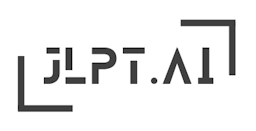

N3CommonParticles
to tomo ni
Used to express the idea of 'together with' or 'along with'. It is often used to describe simultaneous or accompanying actions or events.
Noun + と共に
友達と共に (Together with friends)
Verb + と共に
成長と共に (Along with growth)
夢を追い求めると共に、努力も必要です。
Along with pursuing your dreams, effort is also necessary.
ゆめをおいもとめるとともに、どりょくもひつようです。
Yume o oi motomeru to tomo ni, doryoku mo hitsuyou desu.
技術革新と共に、生活も進化しています。
Along with technological innovation, our lifestyles are also evolving.
ぎじゅつかくしんとともに、せいかつもしんかしています。
Gijutsu kakushin to tomo ni, seikatsu mo shinka shiteimasu.
友達と共に楽しい時間を過ごしました。
I spent a fun time together with my friends.
ともだちとともにたのしいじかんをすごしました。
Tomodachi to tomo ni tanoshii jikan o sugoshimashita.
彼は才能と共に努力も持っています。
He has both talent and effort.
かれはさいのうとともにどりょくももっています。
Kare wa sainou to tomo ni doryoku mo motteimasu.
夕日と共に海を眺めるのは最高の幸せだ。
Watching the sea along with the sunset is the greatest happiness.
ゆうひとともにうみをながめるのはさいこうのしあわせだ。
Yuhi to tomo ni umi o nagameru no wa saikou no shiawase da.
Which sentence means 'Along with studying, I also work part-time'?